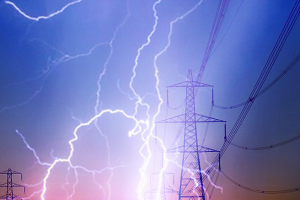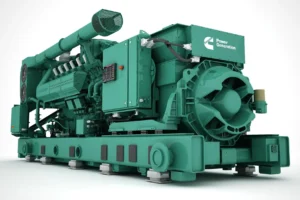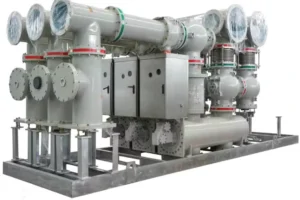Abstract
Hazardous areas, particularly those containing flammable gases, vapors, or dust, are highly susceptible to ignition from lightning-induced transients. Ensuring proper lightning protection in such environments is not only a safety necessity but also a regulatory requirement. This article outlines the recommended lightning protection requirements for hazardous areas in compliance with international standards such as IEC 62305, IEC 60079,...
Generator Grounding Methods and Harmonic Behavior During Ground Faults
1. Introduction
Proper grounding of generator neutrals is critical to ensure personnel safety, protect equipment, and enable effective fault detection. IEEE Std C37.101, “Guide for Generator Ground Protection,” outlines various grounding methods and their associated protection strategies. A key
consideration during ground faults is not only the magnitude of fault current , but also the presence of harmonic components,...
Posted in Design / PV Systems on June 8th, 2025
Battery Energy Storage Systems (BESS) for Integrating Intermittent Renewable Energy into Grid-Connected Systems
Abstract
The global push for clean and sustainable energy has increased the adoption of renewable energy systems, notably solar photovoltaic (PV) technology. However, the intermittency and variability of solar energy pose significant challenges to grid stability and reliability. Battery Energy Storage Systems (BESS) offer a viable solution to this challenge by providing energy buffering, peak shaving, load shifting, and grid...
Mesh Grounding Design for GIS: Importance, Standards, and Analysis Tools
1. Introduction
Grounding systems in high-voltage substations—especially Gas Insulated Substations (GIS)—play a critical role in ensuring operational safety, equipment protection, and electromagnetic compatibility. Among the grounding approaches, mesh grounding is the most widely adopted due to its effectiveness in dissipating fault currents and limiting hazardous potentials.
This article explores the importance of mesh grounding in GIS, the relevant standards, the...
Understanding IEC 61936: Scope, Importance, and IEEE Equivalent
In the realm of high-voltage electrical installations, safety, reliability, and harmonization of standards are paramount. The IEC 61936-1 standard plays a crucial role in achieving these goals, particularly in guiding engineers, utilities, and contractors in the design and construction of high-voltage installations.
Overview of IEC 61936-1
IEC 61936-1:2021, titled "Power installations exceeding 1 kV AC and 1.5 kV...
Posted in Design on May 23rd, 2025
Design Guide – Neutral Transformer Earthing in High Voltage Generators
Introduction
Neutral earthing is a critical design aspect of high-voltage (HV) generators, ensuring safe operation, effective fault detection, and minimized damage during earth faults. Two common methods are neutral earthing resistors (NERs) and neutral grounding transformers (NGTs). For HV generators, NGTs are often preferred. This article explores the reasons for this preference and provides a detailed calculation example for...







